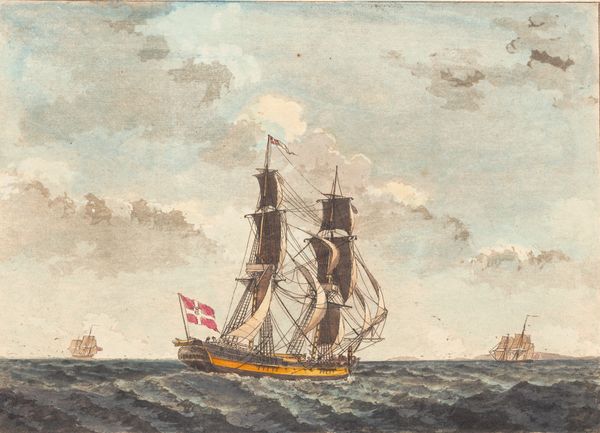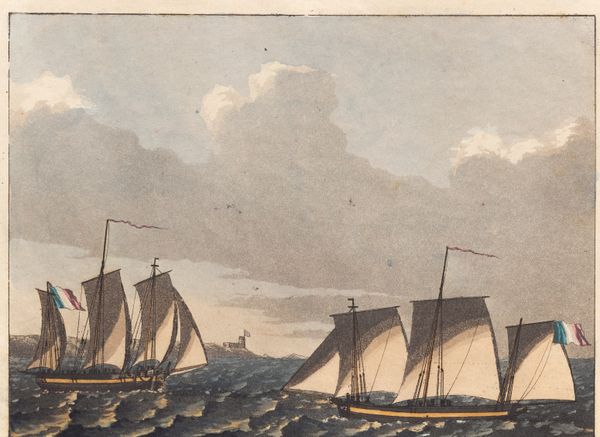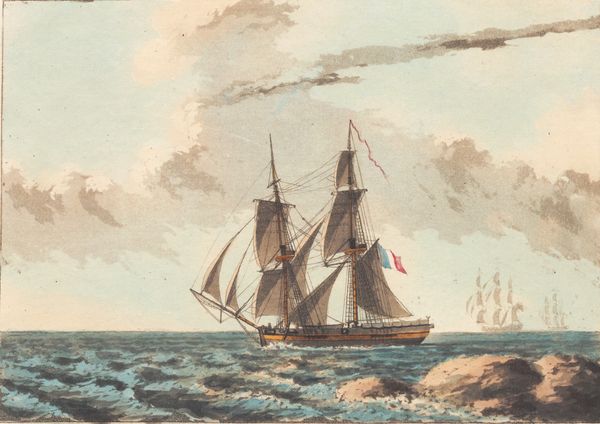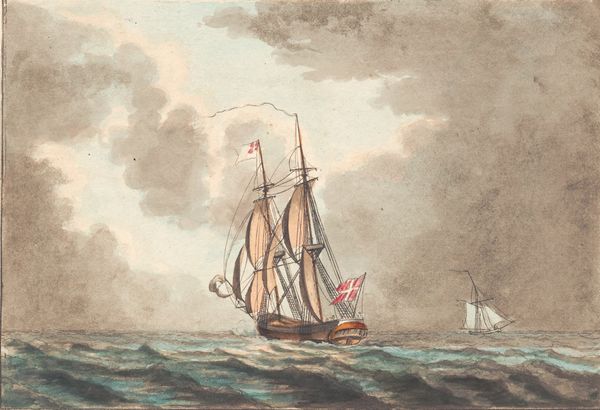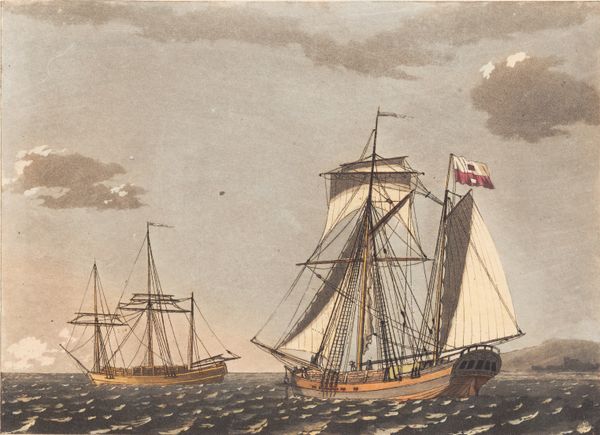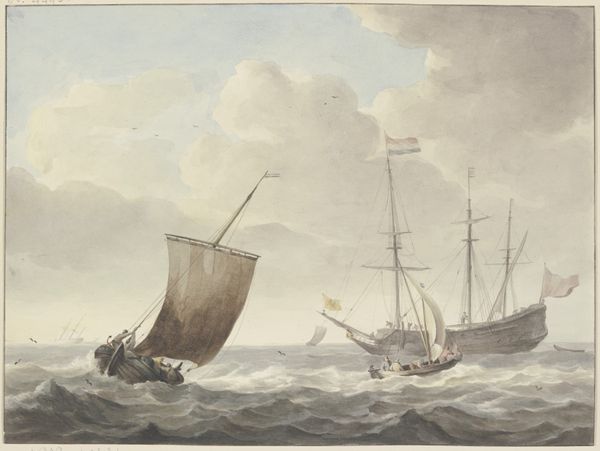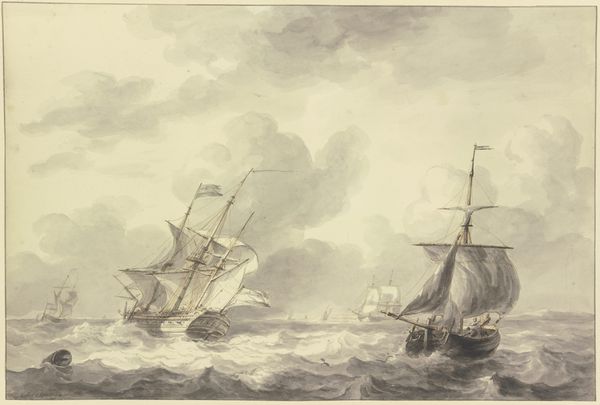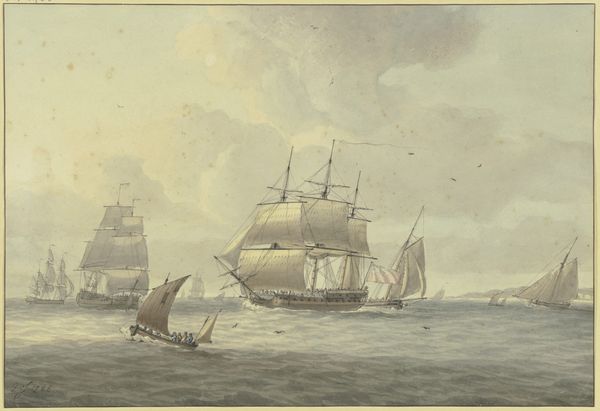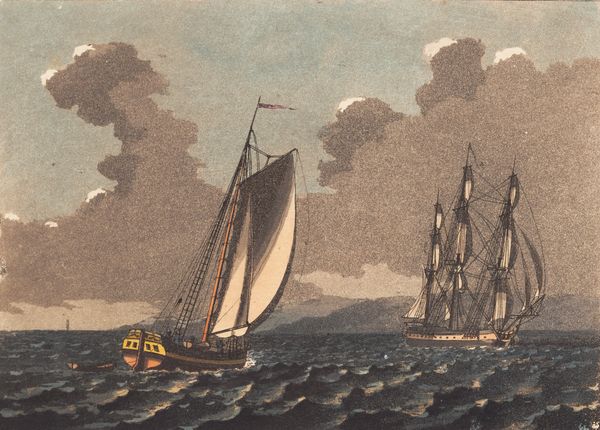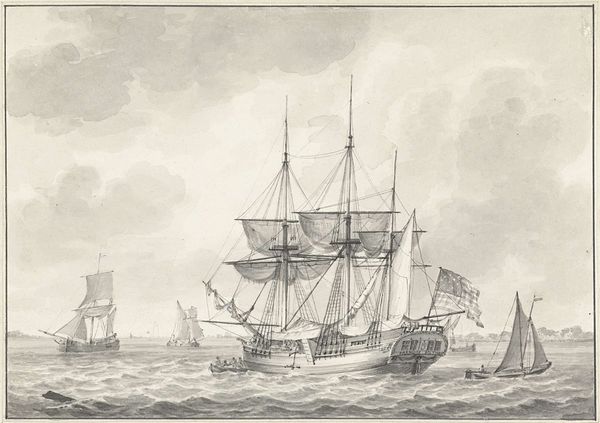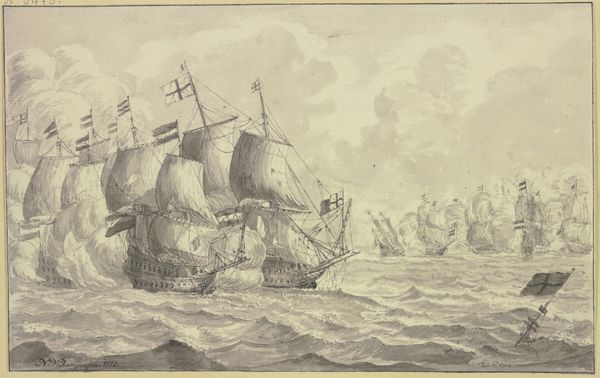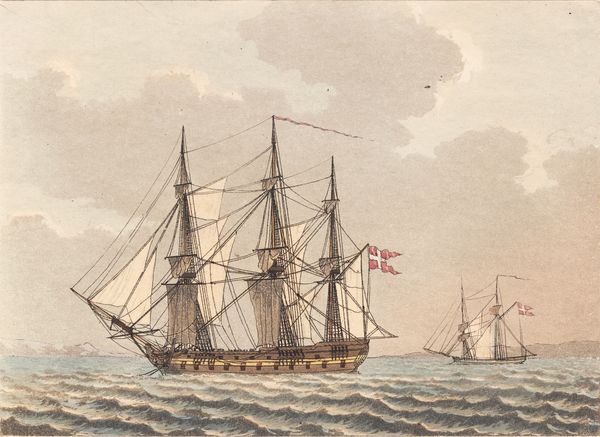
Et skib klarende landet fra sig, og en brig, som, drivende for ankeret, forlisen paa en blind klippe 1805
0:00
0:00
aquatint, print, watercolor
#
aquatint
# print
#
landscape
#
watercolor
#
coloured pencil
#
romanticism
#
watercolour illustration
Dimensions: 190 mm (height) x 238 mm (width) (bladmaal), 160 mm (height) x 217 mm (width) (plademaal), 135 mm (height) x 193 mm (width) (billedmaal)
Curator: This work, created around 1805, is entitled "Et skib klarende landet fra sig, og en brig, som, drivende for ankeret, forlisen paa en blind klippe"—"A ship clearing the land, and a brig, which, drifting from the anchor, is wrecked on a hidden rock." Editor: The immediate impression is, quite frankly, melancholic. The subdued palette and dynamic composition evokes a sense of drama and inevitable doom. Look at how the aquatint and watercolor layers interplay, lending a tangible depth to the waves! Curator: And consider the socio-political context! Denmark was, at this time, navigating the treacherous waters of the Napoleonic Wars. Maritime power was inextricably linked to national survival. This isn't just about a storm at sea; it's about the precariousness of the Danish state itself, the vulnerability of national identity in the face of larger forces. The foundering brig almost symbolizes the breakdown of sovereignty. Editor: A compelling reading, though one could also see the shipwreck in purely visual terms. The tilting brig disrupts the horizontal plane of the sea, creating a visual discord that perfectly captures the chaotic energy of the moment. Note the position of the masts, angled precariously, echoed in the slope of the waves. There’s an undeniable tension in that diagonal line. Curator: The brig becomes a potent symbol of societal collapse then, reflecting a deep anxiety present throughout much of early 19th century Europe. What happens when systems break? How can a nation, or a ship, right itself? This coloured pencil work on laid paper serves as both a historical record and a cultural touchstone. Editor: Perhaps. I remain focused on the relationship between the artwork's material existence and visual presence. Still, understanding that relationship in dialogue with cultural narratives provides interesting, interconnected ways of reading meaning within the work. Curator: And I think, that's how these narratives create space for dialogue! Editor: Precisely, where visual elements create an aperture to societal consciousness!
Comments
No comments
Be the first to comment and join the conversation on the ultimate creative platform.

